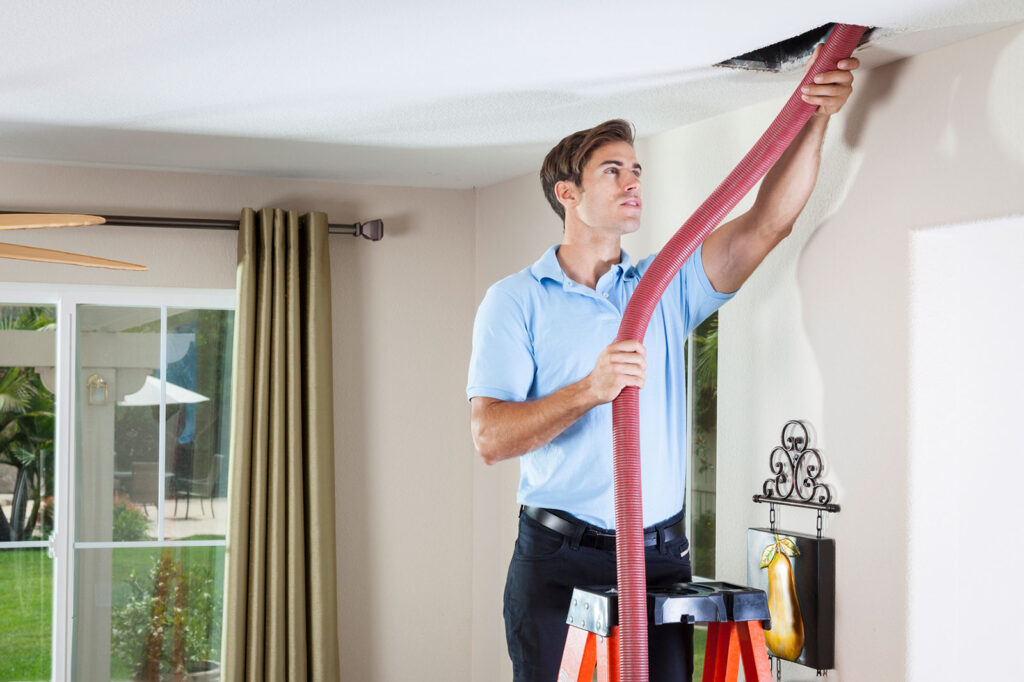Quick search
CTRL+K
Quick search
CTRL+K
When was the last time you thought about the air ducts in your home or office? If you’re like most people, the answer is probably not recently. While hidden behind walls and ceilings, your HVAC (heating, ventilation, and air conditioning) ductwork plays a vital role in circulating air throughout your space. Over time, though, this network of ducts can become a breeding ground for various contaminants that affect indoor air quality, health, and even HVAC system efficiency.
In this blog, we’ll uncover what’s really hiding inside your ducts—and why regular duct cleaning should be on your home maintenance radar.

Your HVAC system works like the lungs of your building. It breathes in and out, circulating air multiple times a day. But just like lungs can be affected by pollutants, so too can your ductwork. As air moves through the system, it can carry and deposit dust, allergens, and other pollutants, especially if your filters are dirty or the system hasn’t been cleaned in a while.
What it is: A mix of dead skin cells, fabric fibers, pet dander, soil particles, and other small debris.
Why it matters: While some dust is normal, a buildup can lead to reduced airflow, increased strain on your system, and degraded indoor air quality.
What it is: Fungi that thrive in moist, dark environments—like ducts near leaking pipes or condensation-prone areas.
Why it matters: Mold spores can spread throughout your home, aggravating allergies, asthma, and respiratory issues. Mold in ducts is often undetectable until health symptoms appear or a musty smell is noticed.
What it is: Microscopic grains released by trees, grasses, and weeds.
Why it matters: Pollen easily enters homes through open doors, windows, or on clothing. It can accumulate in ducts, causing seasonal allergy flare-ups long after pollen season ends.
What it is: Shed hair and microscopic skin flakes from animals.
Why it matters: Even if your pet doesn’t go near the vents, their fur and dander can circulate through the system. These allergens can trigger asthma and allergic reactions in sensitive individuals.
What it is: Pests like mice, rats, or cockroaches may enter ducts seeking warmth and shelter, leaving behind waste, fur, and even carcasses.
Why it matters: These droppings can carry harmful bacteria, viruses, and allergens. Plus, decomposing pests contribute to foul odors and health hazards.
What it is: Leftover particles from drywall, wood, insulation, or sawdust—especially in newly built or renovated homes.
Why it matters: These materials often end up in ducts if registers aren’t properly sealed during construction, contributing to long-term air quality issues.
What it is: Microorganisms that can live in HVAC systems, particularly in humid conditions.
Why it matters: Airborne bacteria and viruses may contribute to the spread of illness, especially in shared environments like offices, clinics, or schools.
What it is: Chemical pollutants from cleaning agents, paints, air fresheners, or off-gassing furniture.
Why it matters: VOCs can enter duct systems and circulate throughout the home, contributing to headaches, fatigue, and long-term health risks.
There are several ways contaminants sneak into your ductwork:
Once inside, these pollutants can settle and recirculate, lowering the quality of the air you breathe.
Prolonged exposure to contaminants in ductwork can lead to:
For those with compromised immune systems, young children, or elderly family members, poor indoor air quality is more than a nuisance—it’s a serious concern.
Not sure if it’s time to get your ducts cleaned? Look out for:
If you notice any of these, it may be time to call a professional duct cleaning service.
Also Read: Air Duct Sealing vs. Duct Replacement: Which Option Is Right for Your Home?
Certified technicians use specialized equipment to clean and vacuum your entire duct system without damaging it.
Replace or clean your HVAC filters every 1–3 months to reduce debris buildup.
Prevent contaminants from entering through cracks or poorly connected duct joints.
Use a dehumidifier to reduce mold and mildew risk.
Consider HEPA or MERV-rated filters if your system allows, especially if you have pets or allergies.
Your HVAC ducts are out of sight, but they shouldn’t be out of mind. Over time, dust, mold, pollen, and even pests can accumulate inside your system—compromising your health, comfort, and wallet. Regular duct cleaning, good filtration, and routine maintenance go a long way in ensuring clean, healthy air for you and your family.
By staying informed and proactive, you can breathe easier knowing your home’s air is as fresh and safe as possible.
© All rights reserved.